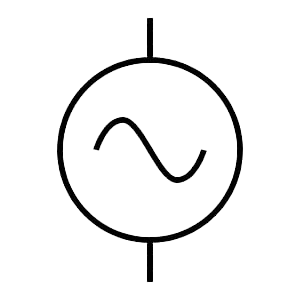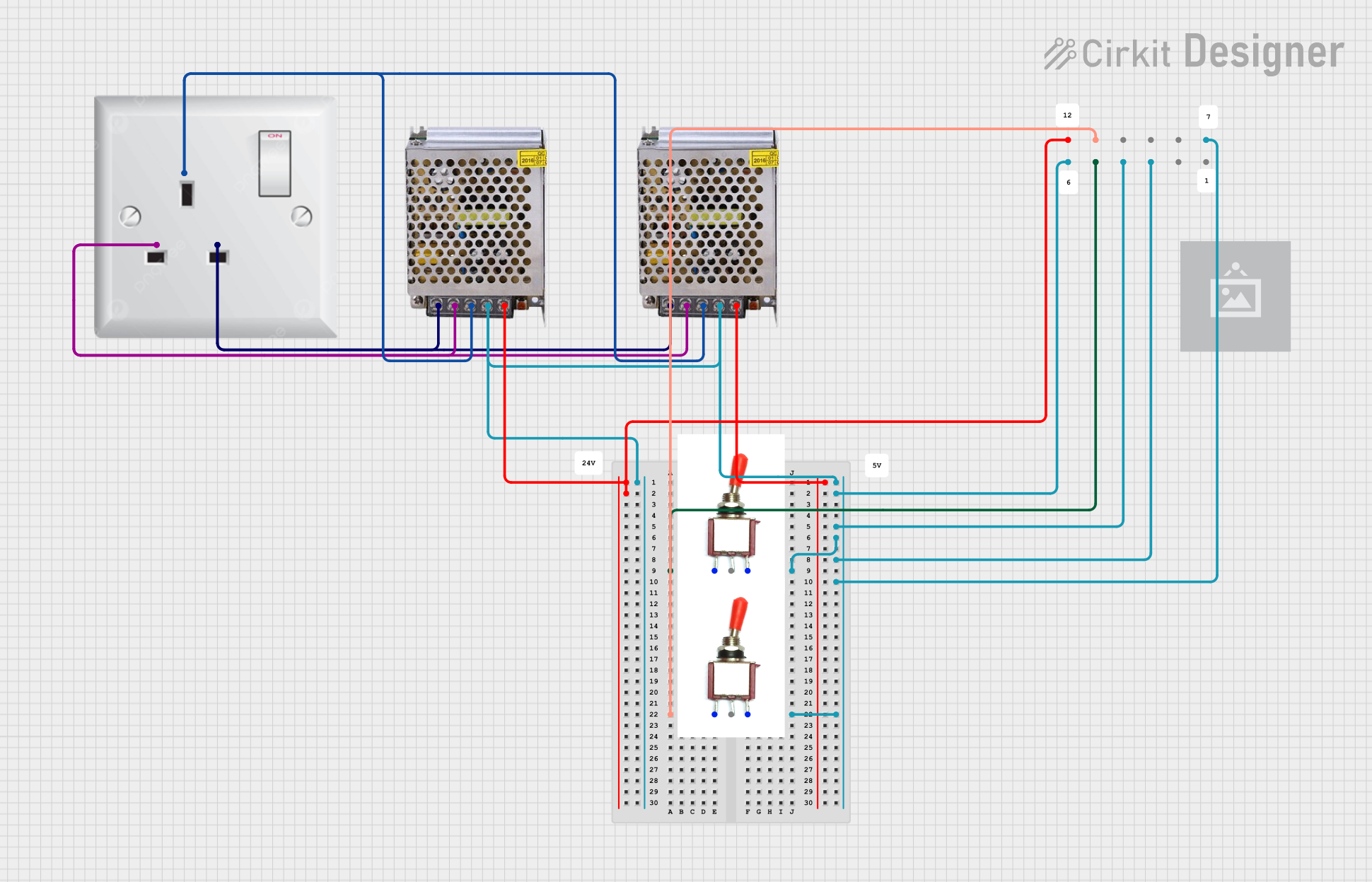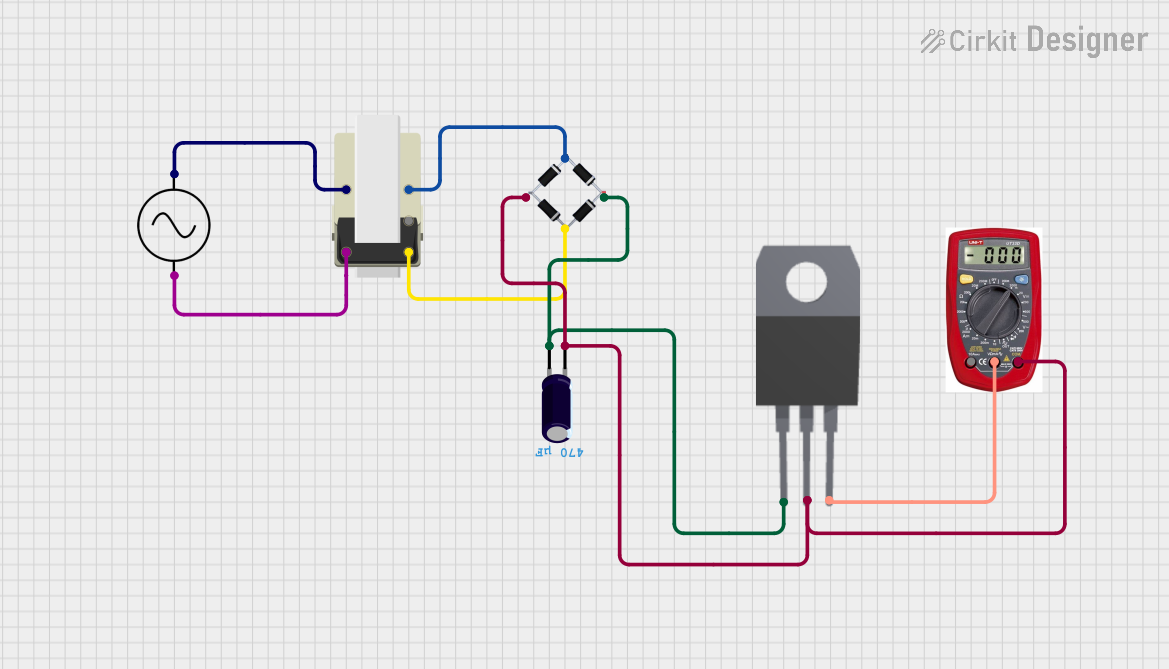
How to Use Ac Supply: Examples, Pinouts, and Specs

 Design with Ac Supply in Cirkit Designer
Design with Ac Supply in Cirkit DesignerIntroduction
An AC (Alternating Current) Supply is a fundamental component in the field of electronics, providing a stable and controlled source of AC voltage and current to power various electronic devices and circuits. AC supplies are widely used in both consumer and industrial applications, ranging from powering household appliances to driving complex machinery in manufacturing processes.
Explore Projects Built with Ac Supply

 Open Project in Cirkit Designer
Open Project in Cirkit Designer
 Open Project in Cirkit Designer
Open Project in Cirkit Designer
 Open Project in Cirkit Designer
Open Project in Cirkit Designer
 Open Project in Cirkit Designer
Open Project in Cirkit DesignerExplore Projects Built with Ac Supply

 Open Project in Cirkit Designer
Open Project in Cirkit Designer
 Open Project in Cirkit Designer
Open Project in Cirkit Designer
 Open Project in Cirkit Designer
Open Project in Cirkit Designer
 Open Project in Cirkit Designer
Open Project in Cirkit DesignerCommon Applications and Use Cases
- Household Appliances: AC supplies are used in devices such as refrigerators, washing machines, and air conditioners.
- Power Tools: Drills, saws, and other power tools operate using AC power.
- Laboratory Equipment: Oscilloscopes, function generators, and other lab instruments often require an AC supply.
- Industrial Machinery: Conveyors, pumps, and motors in industrial settings are typically powered by AC supplies.
- Consumer Electronics: Televisions, computers, and gaming consoles use AC power converted to the appropriate voltage and current.
Technical Specifications
Key Technical Details
- Input Voltage Range: Typically 100-240V AC (depending on region)
- Output Voltage Range: Can vary, often user-selectable or fixed standard voltages (e.g., 3.3V, 5V, 12V, 24V)
- Frequency: 50Hz or 60Hz (region-specific)
- Maximum Current Rating: Depends on the design and purpose of the AC supply
- Efficiency: Varies with design, often >80% for modern supplies
- Isolation: May include isolation between input and output for safety
Pin Configuration and Descriptions
| Pin Number | Description | Notes |
|---|---|---|
| 1 | Live (L) | Connected to the phase wire |
| 2 | Neutral (N) | Connected to the neutral wire |
| 3 | Earth (E) | Grounding for safety |
| 4 | Output (+) | Positive output terminal |
| 5 | Output (-) or Ground | Negative output or ground |
Usage Instructions
How to Use the Component in a Circuit
- Safety First: Ensure that the AC supply is disconnected from the mains power before wiring.
- Wiring: Connect the Live (L) and Neutral (N) pins to the corresponding mains power lines. If available, connect the Earth (E) pin to the ground for safety.
- Setting Output Voltage: If the AC supply has selectable output voltage, set it according to the needs of your circuit.
- Connecting the Load: Attach the positive and negative leads of your circuit to the Output (+) and Output (-) terminals of the AC supply, respectively.
- Power On: Once all connections are secure and double-checked, connect the AC supply to the mains power and switch it on.
Important Considerations and Best Practices
- Always adhere to local electrical codes and safety standards.
- Use a fuse or circuit breaker rated for the AC supply's maximum current.
- Ensure proper ventilation around the AC supply to prevent overheating.
- If the AC supply is adjustable, do not exceed the rated output voltage and current.
- Use appropriate wire gauge for the current rating of the AC supply.
Troubleshooting and FAQs
Common Issues Users Might Face
- No Output Voltage: Check the mains connection, fuse, and ensure the AC supply is switched on.
- Incorrect Output Voltage: Verify the output voltage setting and measure with a multimeter.
- Overheating: Ensure adequate ventilation and check if the current draw is within the supply's rating.
Solutions and Tips for Troubleshooting
- Always measure the output voltage before connecting to your circuit to prevent damage.
- If the AC supply has a fuse, check if it has blown and replace it with one of the same rating.
- For overheating issues, reduce the load or improve cooling around the AC supply.
FAQs
Q: Can I use an AC supply with a higher current rating than my circuit requires?
A: Yes, it is generally safe to use an AC supply with a higher current rating. The circuit will only draw the current it needs.
Q: What happens if I connect the Live and Neutral wires incorrectly?
A: In most cases, the AC supply will not work, and it may pose a safety risk. Always connect the wires correctly according to the pin configuration.
Q: Is it necessary to ground my AC supply?
A: Grounding is an important safety feature that helps protect against electrical shock. It is highly recommended to ground the AC supply if the option is available.
Note: This documentation is for informational purposes only. Always consult a professional electrician or engineer when working with AC mains power to ensure safety and compliance with local regulations.